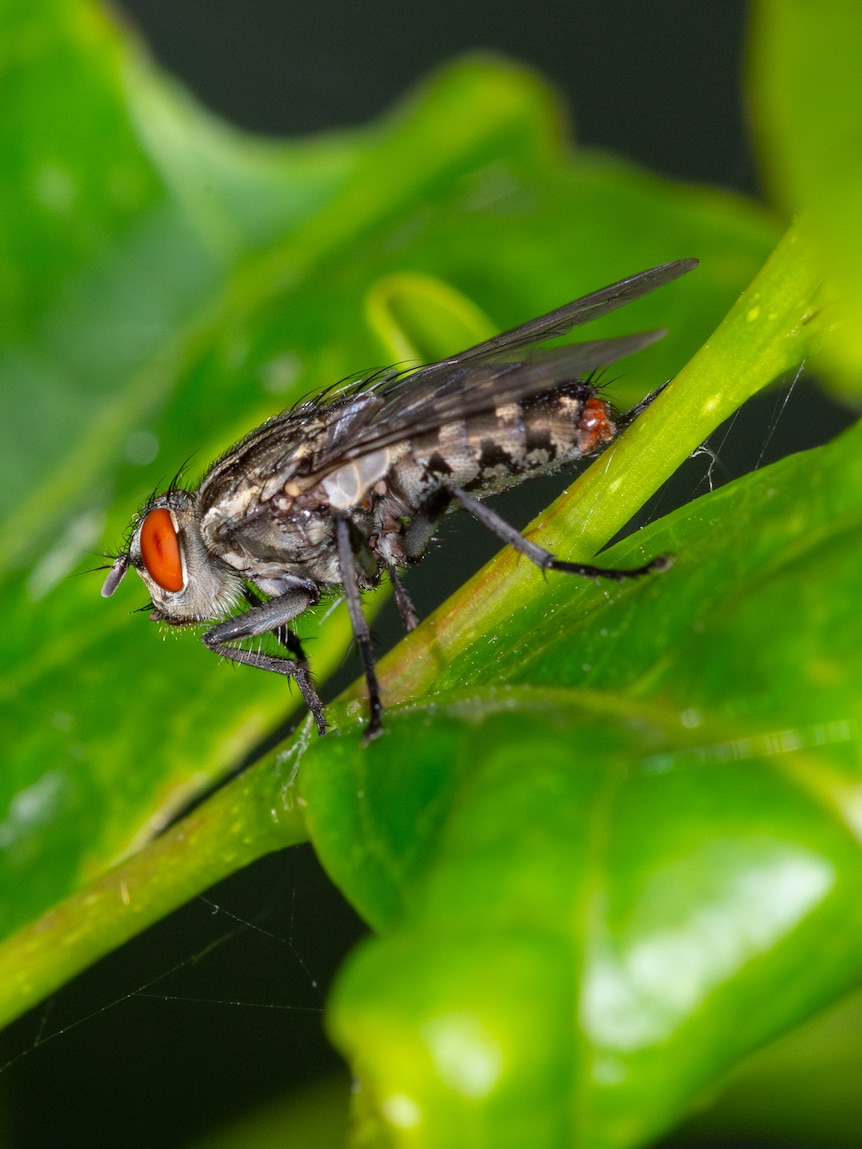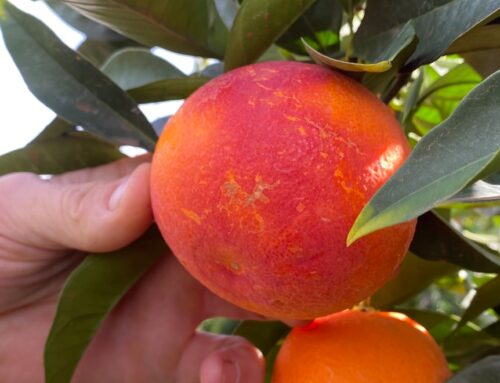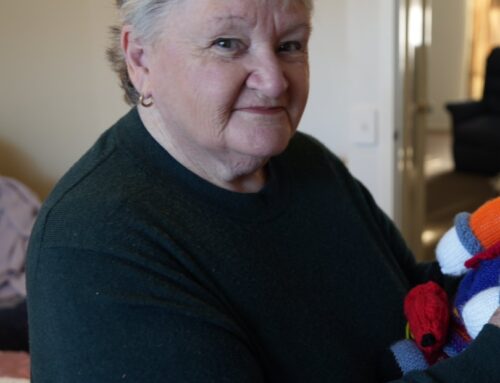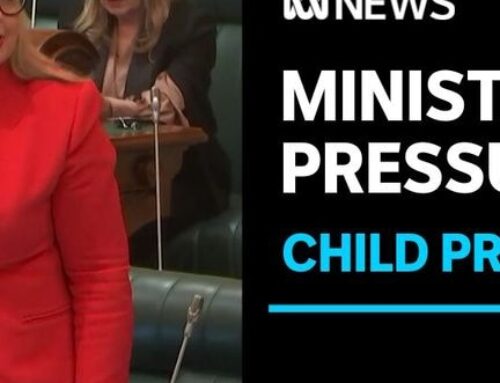The buzz of a billion flies — it is the soundtrack of an Australian summer.
The all-too-familiar bush flies and house flies are the uninvited guests at outdoor activities across the country, along with blowflies and march flies.
But according to nature writer Tanya Loos, the overwhelming majority of flies are not the least bit interested in ruining your barbecue, and with more than 250,000 species worldwide, most are too busy doing good.
Ms Loos told ABC Statewide Mornings, that flies, in general, suffered from an image problem.
“I think there’s some great flies. If you think of hover flies, they are some of the best pollinators we have for our flowers and our vegetables,” she said.
“Some are serious agricultural pests, though. The Australian sheep blowfly, which is actually from southern Africa, is a huge problem for the sheep industry.
“Then there is the introduced house fly. The issue with them is they land on food and the way they digest food is by spitting out their digestive juices onto the food and making it soupy so they can lap it up.
“That’s going to be a pretty good vector for disease when they’re landing on something dead outside and then getting onto your food.”
But Ms Loos said the worst species for her was the march flies.
“When they stick their proboscis in, it really hurts so much,” she said.
‘They are highly valuable’
There are more than 7,500 true fly species formally described in Australia, but according to Deakin University zoologist Dr Phillip Barton, that is just a fraction of the total number.
Apart from pollinators, he said there were countless flies performing beneficial work.
“They are enormously important in the food chain, and are eaten by other invertebrates as well as birds and bats,” Dr Barton said.
“Many flies help keep our ecosystems clean by eating all the dead and dirty stuff like dead animals, dung or food waste.
“It’s only in domestic or farm settings they are a nuisance. Elsewhere they are highly valuable.”
Dr Barton said the black soldier fly was grown “commercially as food for livestock”.
“They are fed food waste and are a source of high-quality protein.”
Others, such as the tachinids, are important predators of other flies and insects.
Friend or foe?
With such a profusion of different species it can be difficult to identify many flies.
Others, particularly brightly coloured examples, are easier to spot.
“You may not think to describe flies as beautiful, but some have spectacular colours, and we’re talking about metallic blues and greens,” Ms Loos said.
“Colour is used in all sorts of species so that they can recognise each other and mate with each other.”
Ms Loos said the brightness of the colour was often an indicator that the fly was healthy.
“The brighter the colour, the better the diet, the more effective they are at finding food,” she said.
“There is a march fly that doesn’t bite people, and it’s so beautiful. It’s got bright, emerald-green eyes and is mainly golden yellow in colour.”
“I recommend if you can manage to take a photo of a fly and then upload it to iNaturalist Australia you can have experts identifying what fly species that could be, based on local flies in your area.”
A spotter’s guide to the fly files
Experts agree there are more than 30,000 true fly species (Diptera) in Australia, most of which are yet to be named.
Wildlife photographer Peter Rowland, co-author of A Naturalist’s Guide to the Insects of Australia, described some of the more familiar varieties.
House flies and bush flies (muscidae)
The bush fly is native to Australia but house flies are cosmopolitan, in that they are everywhere. There are about 200 different species but all are about 5 millimetres long.
Blowflies (calliphoaridae)
They can lay eggs or have live young. Most like warm weather but some, such as the lesser brown blowfly, tend to be more active in winter. Typically, they are large flies, up to 10mm in length.
Horse flies and march flies (tapaniidae)
They are 5mm to 25mm in length. The biting flies are typically the females because they feed on blood and can cause allergic reactions.
Tachinids (tachinidae)
These can grow up to 20mm long and all are parasitic. Some even parasitise snails. They lay their eggs on the ground. Once they hatch they find a host. Some tachinids are brightly coloured.
Hoverflies (syrphidae)
They are beneficial and look like bees or wasps as a defence mechanism. The young are veracious feeders of aphids and other pests. The Australian common hoverfly larvae can consume more than 300 aphids or scales in their short life cycle.
Flesh flies (sarcophagidae)
Flesh flies (5mm to 20mm) typically turn up after blowflies to a carcass. They lay live larvae so they can get a head start on other maggots.
Biting midges (ceratopogonidae)
These are tiny (1mm to 4mm) biting flies and the group includes sandflies. They have sharp mouthparts well adapted for piercing skin.
Non-biting midges (chironomidae)
Closely related to the biting midges, these small insects sometimes resemble mosquitoes.
Signal flies (platystomatidae)
These feed on animal waste. They get their name from the male who waves his wings to attract a mate. Males are territorial, guarding their patch and headbutting rivals to ward them off.
Vinegar fruit flies (drosophilidae)
These tiny flies (2mm to 4mm) are attracted to overripe fruit. These are the ones that will drop into your Shiraz and try to drown themselves.
Lauxinid flies (lauxaniidae)
The young feed on decomposing organic matter. They are similar in size to vinegar fruit flies but have dark marks in their wings rather than clear wings.
Qflies, Queenland fruit flies (tephritidae)
Larger than other fruit flies (up to 10mm) these are native to Australia and an international pest. The reduction in their native habitat and an increase in fruit orchards means they have spread across the country.





